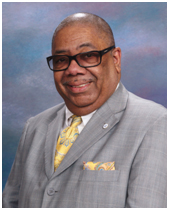
By Rev. Donald L. Perryman, Ph.D.
The Truth Contributor
Do not think there are no crocodiles just because the water is calm.
– African Proverb
The election season’s progression reveals a markedly different shift from the intense, impassioned spirit witnessed during the August Special Election.
The upcoming November 7 election, with its predominately uncontested races and apparent lack of enthusiasm, appears serene on the surface. However, beneath this calm exterior lies a profound complexity intrinsic to our local community’s politics.
Here’s what is essential:
Toledo City Council, District One: Hobbs vs. Strong:
In this race, incumbent Johnny Hobbs III is pitted against the charismatic Shaun Strong. The District 1 contest provides a fascinating glimpse into the interplay of endorsements, personal histories and community dynamics, all vital components in understanding politics Toledo-style.
Endorsements play a vital role in swaying public opinion here. Shaun Strong’s endorsement from The Blade certainly grants him a level of prestige. However, the Democratic Party’s ambiguous position, in which they endorsed both candidates in the same race, introduces an element of uncertainty. But how influential is The Blade’s endorsement within the Black community, where direct community engagement, access, and visibility typically outweigh other factors in a local race?
As The Blade noted, Johnny Hobbs III’s tenure with the State of Ohio and finance report missteps bring their share of controversies. On the surface, it paints a tale of a job loss possibly due to potential misdemeanors. However, a deeper dive reveals a narrative encompassing lengthy shop inspections and other complexities. The pivotal question remains: how much will this affect the average District 1 voter’s perception?
Hobbs possesses the advantage as the incumbent with established community ties. This leverage cannot be underestimated. Historical controversies associated with Strong might offset Hobbs’ recent issues, potentially influencing the voters’ final choice. But with the backing of significant groups like local labor unions and Party mogul Pete “Potentate” Gerken, Hobbs’ position seems adequately secure. Yet, politics, by nature, is unpredictable, and until the last vote is cast, nothing can be said with absolute certainty.
Toledo Public School Board: The Unique Challenge of Write-In Candidates
The TPS Board race presents a “tricky” challenge due to incumbent Sheena Barnes’ requirement to run as a write-in candidate for failing to submit her petitions on time. This adds layers of complexity to the voter’s process and the dynamics of the race, making her candidacy an uphill battle since she is challenged by two other write-in candidates.
Yet, Barnes’ campaign appears undeterred. Support from groups such as the teacher’s union has helped by working with voters to remind them to remember to vote and to write Barnes’ name in.
Also, Barnes’ campaign staff stands with yard signs championing “write-in Sheena Barnes” scattered across locales. The active push from the Democratic Party to emphasize her “write-in” status further propels her campaign.
However, the challenges associated with a write-in candidacy cannot be downplayed. Voters must now physically write her name precisely, and any significant deviation could result in the vote being discarded. This precision pressure places even more emphasis on Barnes’ campaign to educate and remind her supporters.
For those accustomed to ticking boxes next to pre-printed names, writing in a candidate’s name is daunting, particularly with electronic ballots. The potential for multiple write-in lines can compound this complexity.
Many seasoned voters admit to never participating in a write-in vote, exposing the challenges. I spoke with several early voters who stated that they did not write in votes for any candidate.
As the race progresses, it remains to be seen if Barnes can overcome these hurdles and translate her campaign’s energy into actual votes. I’m hearing that Barnes should be fine.
Analysis of Ohio Issue One: Implications for the African-American Community
Over the past 50 years, advocacy for stringent abortion restrictions has seen vulnerable communities grappling with limited access to reproductive healthcare. Recent polls, like the July USA TODAY Network/Suffolk University poll, indicate substantial support (58% of Ohioans) for Issue One. However, within the African-American community, perspectives on abortion are diverse, molded by a mix of personal, cultural, religious, and economic factors.
Ohio Issue One, focusing on abortion rights, holds significant implications for the African-American community. Our community, historically at the crossroads of public policy decisions, is deeply affected by healthcare disparities and socio-economic challenges.
The American government has had an invasive interest in Black women’s bodies since enslaving Black people and afterward in eugenic policies, leaving a stain on the medical field’s relationship with Black pregnant people.
And, from the forced sterilization of Black women to health care’s current biases creating preventable disparities in Black birthing and maternal mortality, America has always “believed Black people were too ignorant to control their own reproduction, and it was up to White people to educate them and in some instances do it for them,” says medical researcher Keisha Ray. So, this translates into no regard for African American women’s reproductive autonomy, which can encourage little regard for their obstetric health.
Therefore, Ohio’s Issue One is a powerful tool, allowing marginalized communities to influence policies that directly impact them. The shift in public opinion, often termed the “Dobbs Effect,” underscores the fact that reproductive rights are not just about abortion but also encompass broader healthcare concerns. The outcome of Ohio Issue One will inevitably shape not just reproductive rights but also the larger narrative around healthcare access, socio-economic disparities, and policy representation for the African-American community.
So, finally, as we near the end of this election season, the political landscape, though seemingly calm, is layered with complexities. The candidates and issues above reflect the broader challenges and aspirations of the African-American community. The election’s results will shape not just policies but also the representation and socio-cultural fabric of our community in the years to come.
Contact Rev. Donald Perryman, PhD, at drdlperryman@enterofhopebaptist.org
